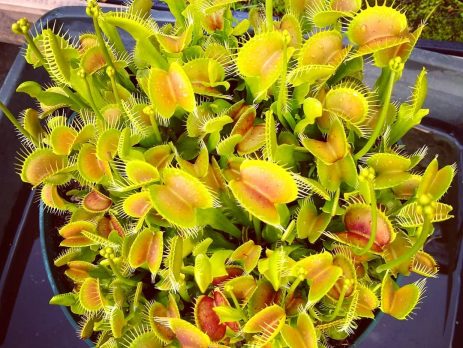How do I grow my Venus Flytrap Indoors?
Venus Flytraps can be grown successfully indoors, but they have specific requirements that need to be met in order for them to thrive. Here are some of the key requirements for growing Venus Flytraps indoors:
- Soil: Venus Flytraps require a well-draining, nutrient-poor soil that is low in minerals and salts. A good soil mix for Venus Flytraps is a blend of peat moss and perlite or sand. You can also use a pre-made carnivorous plant soil mix that is specifically formulated for Venus Flytraps and other carnivorous plants.
- Water: Venus Flytraps require moist soil at all times, but they are also susceptible to root rot if they are kept too wet. Water your Venus Flytrap with distilled or rainwater, rather than tap water, which can contain minerals and salts that can harm the plant. You can keep the soil moist by watering the plant from the bottom, rather than from the top, to avoid getting water on the leaves and traps.
- Light: Venus Flytraps require bright, indirect sunlight in order to thrive. They can be grown indoors near a sunny window, but they should not be exposed to direct sunlight, as this can burn the leaves and traps.
- Humidity: Venus Flytraps require high humidity in order to stay healthy and avoid drying out. You can increase the humidity around your Venus Flytrap by placing a tray of water near the plant, or by using a humidifier.
- Temperature: Venus Flytraps prefer to grow in a temperature range of 65-85°F (18-29°C). Avoid placing your Venus Flytrap near cold drafts or in areas with extreme temperature fluctuations.
- Feeding: While Venus Flytraps are carnivorous and can capture their own prey, they may benefit from occasional feeding with small insects like flies or crickets. Do not overfeed your Venus Flytrap, as this can lead to rotting and disease.
By providing the right growing conditions, you can successfully grow Venus Flytraps indoors and enjoy the fascinating world of carnivorous plants.












Leave a Reply
You must be logged in to post a comment.